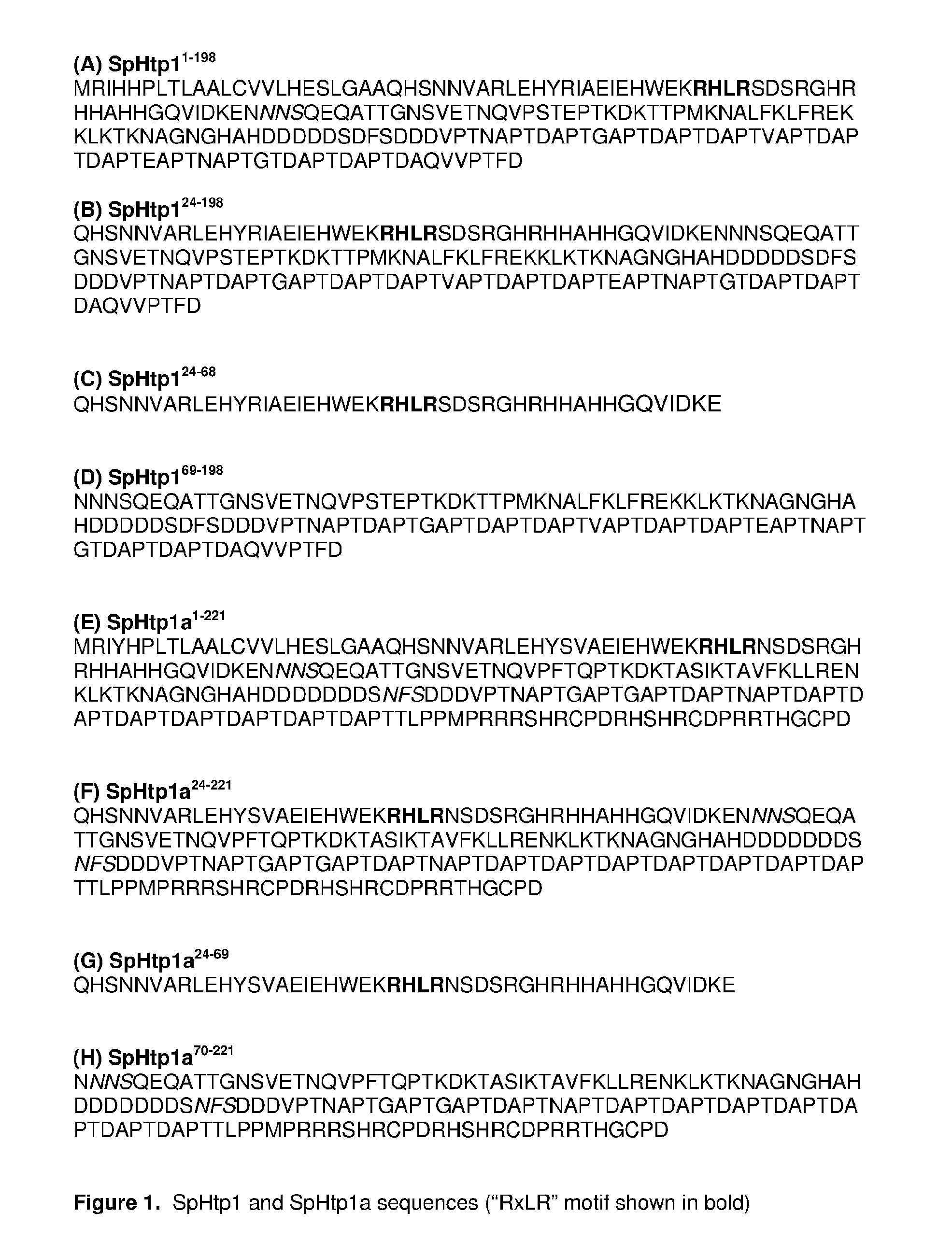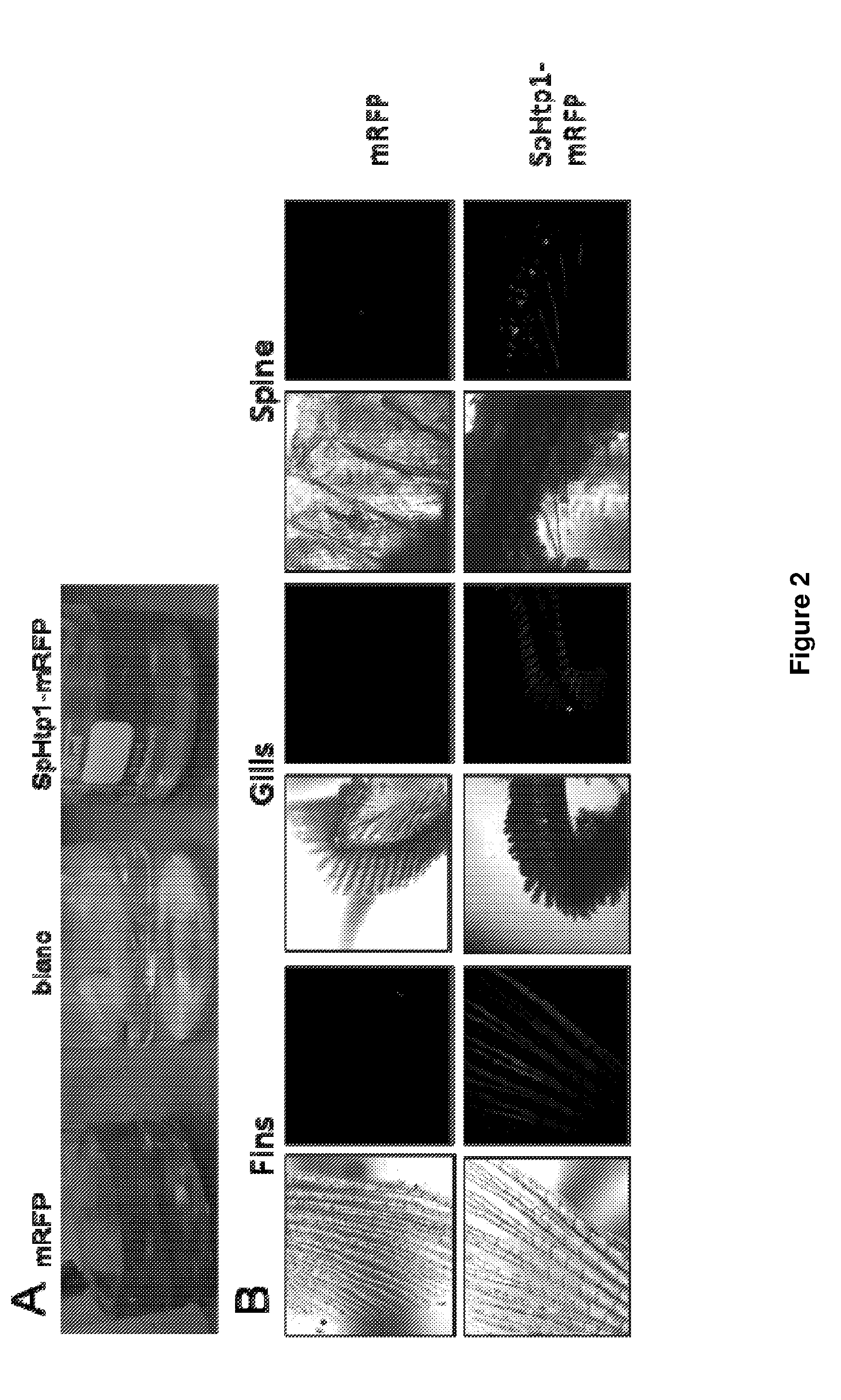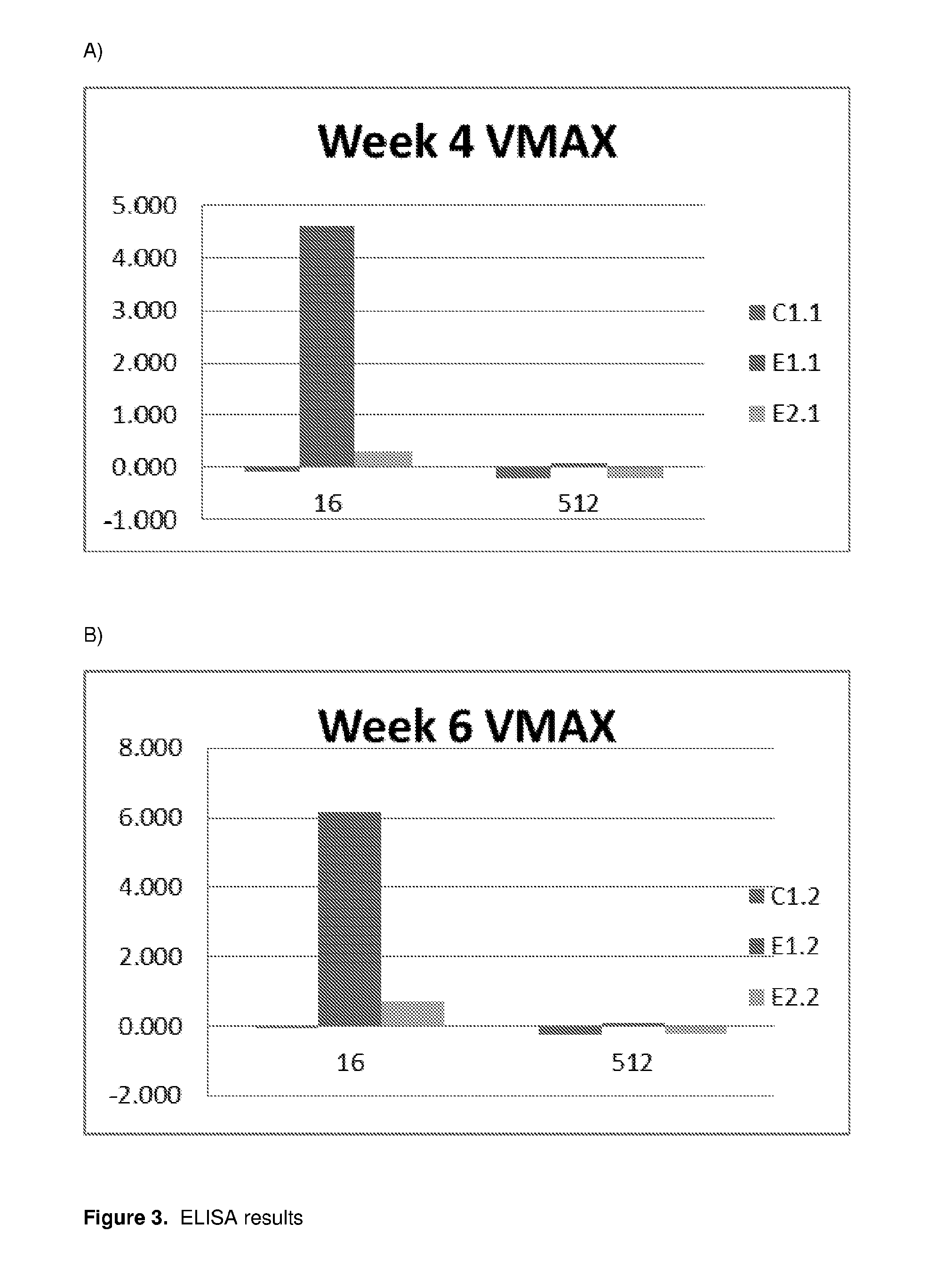Fish vaccine
a vaccine and fish technology, applied in the field of fish vaccines, can solve the problems of weak and short duration of immunization, rapid entry of diseases and parasites into the farmed population, and low uptake of oral vaccines, so as to reduce the occurrence and/or severity of “local reactions” and low cost. , the effect of eliciting
- Summary
- Abstract
- Description
- Claims
- Application Information
AI Technical Summary
Benefits of technology
Problems solved by technology
Method used
Image
Examples
example 1
ults—Testing for Rainbow Trout IgG Capable to Bind mRFP(His)6 After Immersion Vaccination (See Also FIG. 3)
[0149]Three salmon were exposed to protein constructs by immersion; two experimental animals (E1.1 & E2.1) were exposed to were exposed to SpHtp124-68:mRFP(His)6, whilst one control animal (C1.1) was exposed to mRFP(His)6 only. Exposure was by 1.5 hour immersion in tank water comprising 3 μM of the relevant composition.
[0150]After 4 and 6 week blood samples were taken and tested by ELISA for binding to mRFP(His)6: the results are shown in FIG. 3. As can be seen, both experimental fish test positive for antibodies against mRFP. Whilst lower than E1.1, the antibody levels observed in E2.1 are sufficient for antibody immunity. It is also noted that variation in immune response between individuals is not unexpected.
[0151]Note that it is likely a higher antibody titer would have been recorded at 8 weeks. However, the data at 8 weeks was not obtained as the experiment was prematurely...
PUM
| Property | Measurement | Unit |
|---|---|---|
| composition | aaaaa | aaaaa |
| nucleic acid | aaaaa | aaaaa |
| concentration | aaaaa | aaaaa |
Abstract
Description
Claims
Application Information
 Login to View More
Login to View More - R&D
- Intellectual Property
- Life Sciences
- Materials
- Tech Scout
- Unparalleled Data Quality
- Higher Quality Content
- 60% Fewer Hallucinations
Browse by: Latest US Patents, China's latest patents, Technical Efficacy Thesaurus, Application Domain, Technology Topic, Popular Technical Reports.
© 2025 PatSnap. All rights reserved.Legal|Privacy policy|Modern Slavery Act Transparency Statement|Sitemap|About US| Contact US: help@patsnap.com



